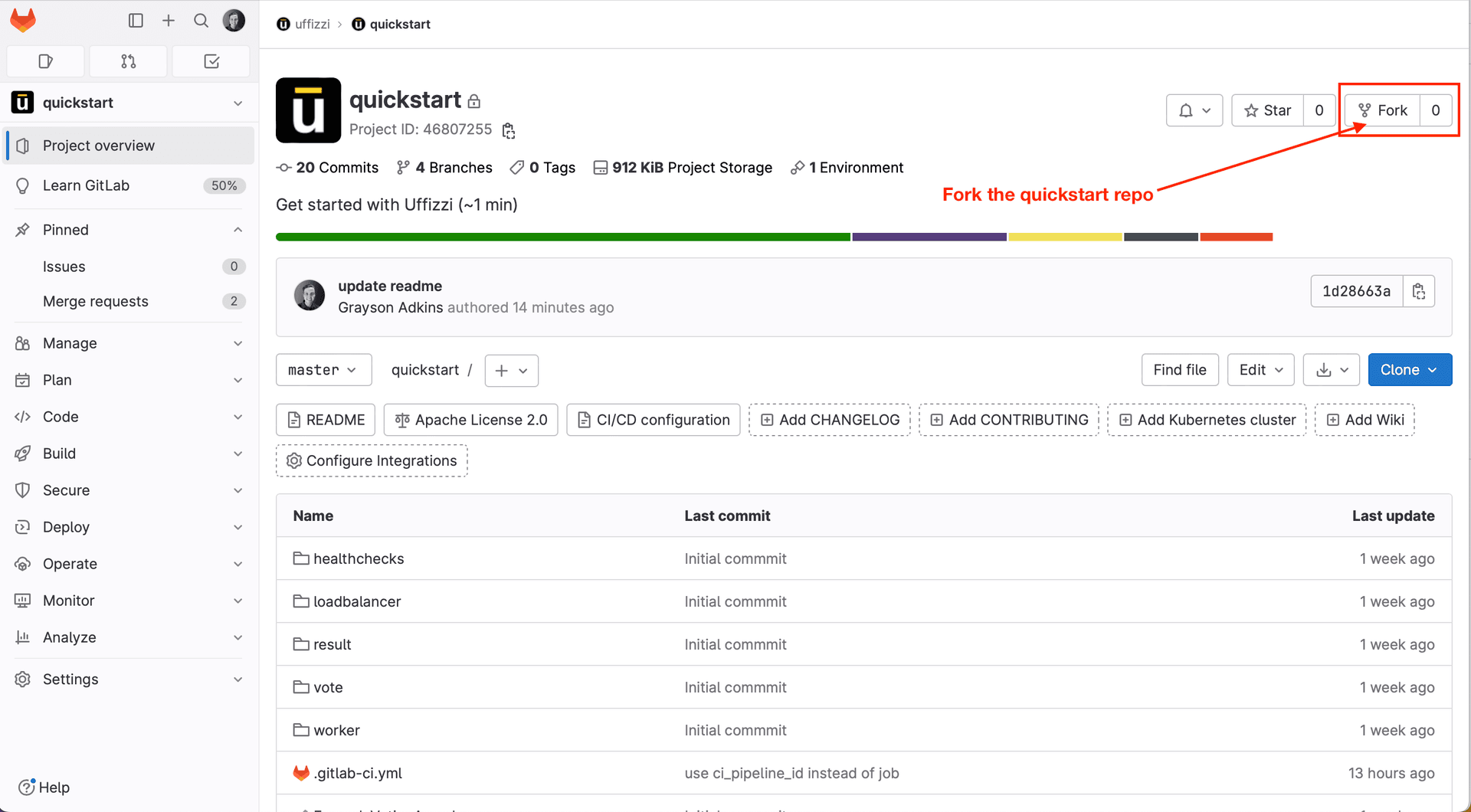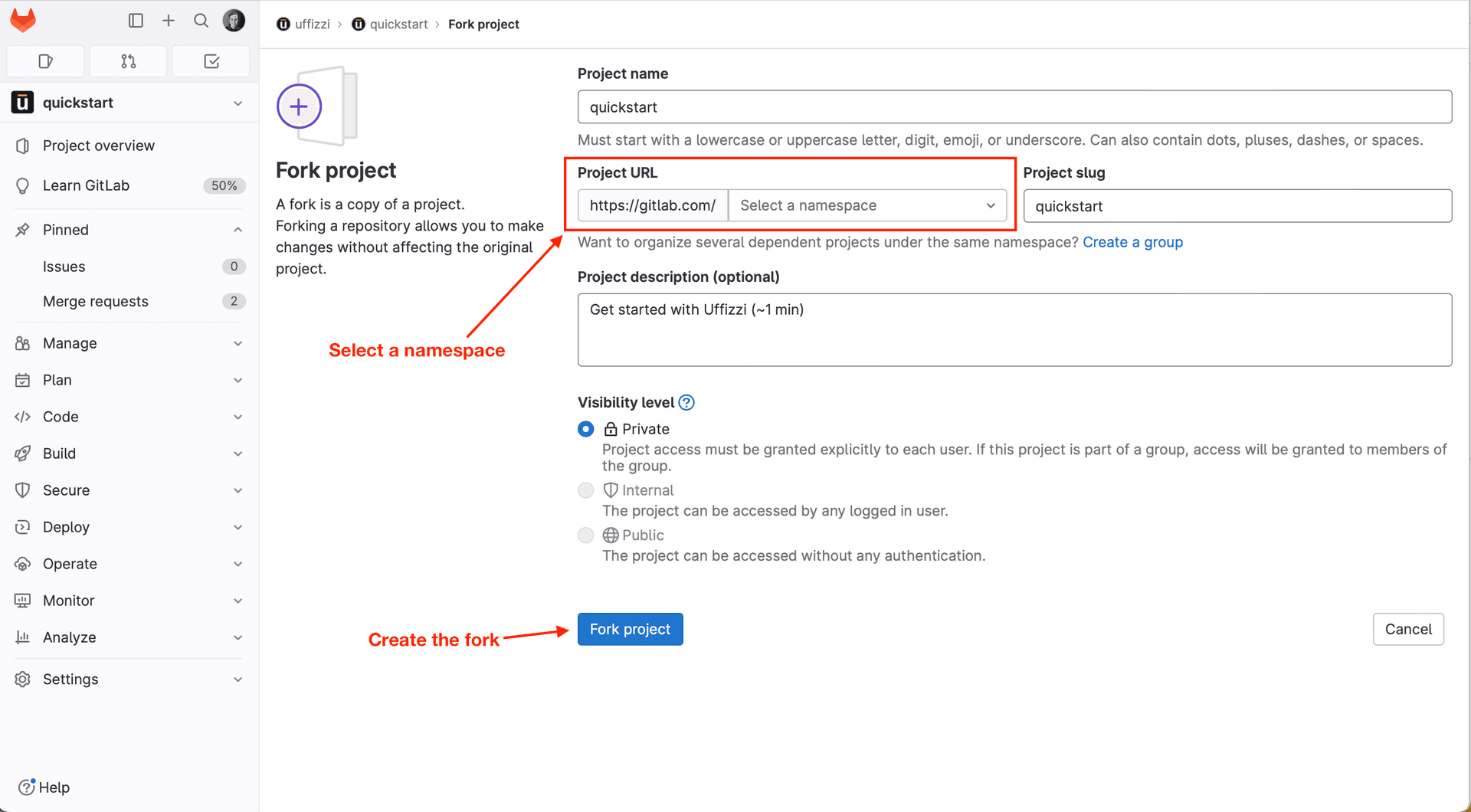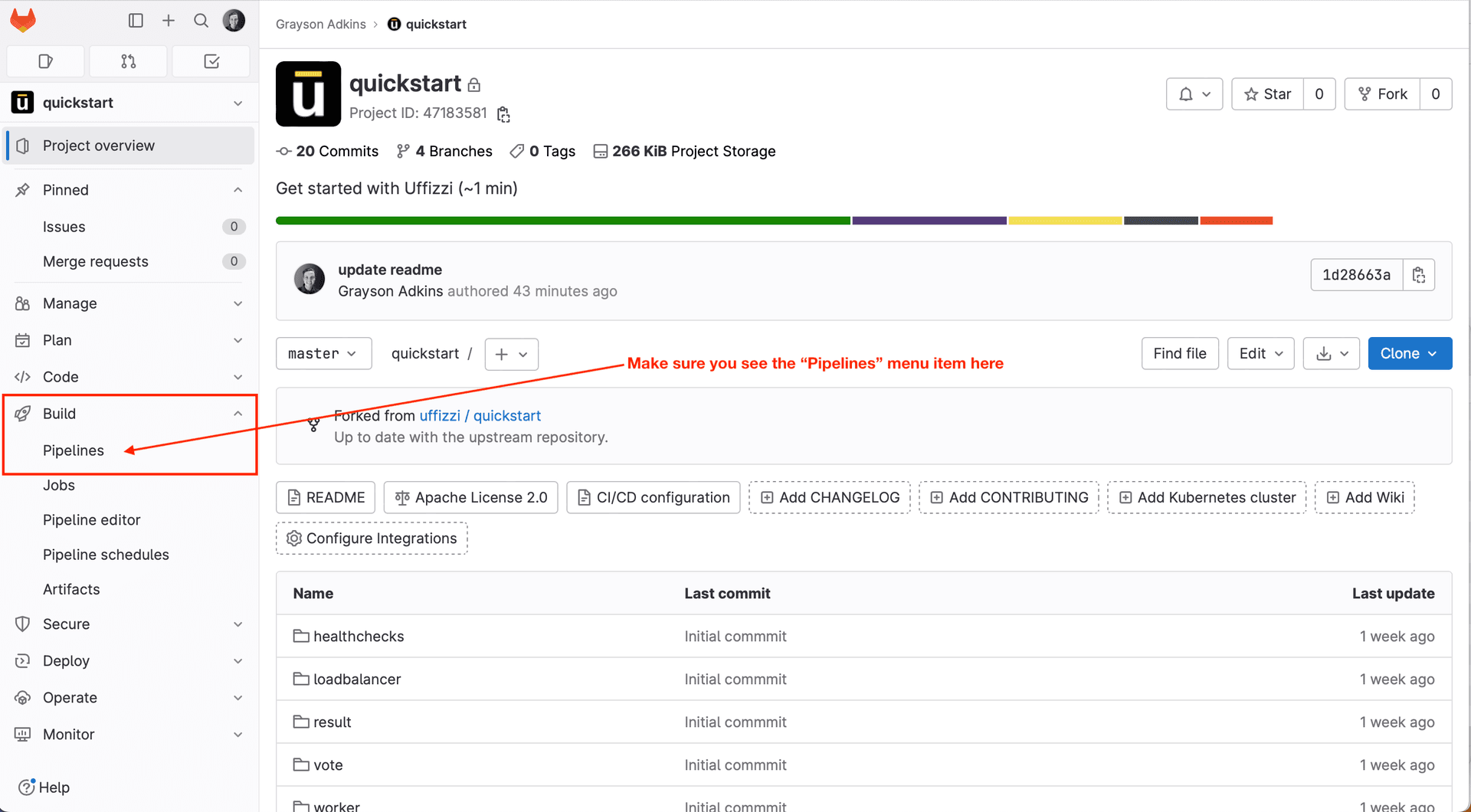GitLab CI Virtual Cluster Example
Follow the example guide below to see what how the Uffizzi virtual cluster integration with GitLab CI works end-to-end.
Get Starteds
Fork the quickstart repo
Start by forking the quickstart-k8s (opens in a new tab) repository on GitLab.
From the project home page, select Fork, then choose a namespace and project slug. Select Fork project.


Enable CI/CD
Ensure GitLab CI/CD is enabled for your project. If you don't see the Build > Pipelines option in left sidebar, following these steps (opens in a new tab) to enable it.

Open a Merge Request
Open a merge request (MR) for try-uffizzi branch against master in your fork.
Be sure that you’re opening the MR on the branches of your fork (i.e. your-account/master ← your-account/try-uffizzi).
If you try to open a MR for uffizzi/quickstart/~/tree/master ← your-account/~/tree/try-uffizzi, the pipeline will not run in this example.

This will kick off a GitLab pipeline and the ephemeral environment URL will be dumped to stdout of the pipeline job.
What to expect
The MR will trigger a pipeline defined in .gitlab-ci.yml (opens in a new tab) that creates a Uffizzi ephemeral environment and deploys the Hello World application defined by this repo. The ephemeral environment URL (See Uffizzi Ingress will be echoed to stdout of the deploy_environment Job. Look for the following line in the Job logs:
This virtual cluster is configured with a Uffizzi Ingress, which makes the web service available at a predictable URL, consisting of https://app.uffizzi.com/ appended with the GitHub pull request domain. For example:
https://app.uffizzi.com/github.com/{account}/{repo}/pull/{pull-request-number}.
You can make requests to specific endpoints by appending a route to the end of the URL. For example:
https://app.uffizzi.com/github.com/boxyhq/jackson/pull/661/api/health
To learn how to enable predicable URLs for your ephemeral environments, see the Uffizzi Ingress documentation.
How it works
Ephemeral environments are configured with a kustomization.yaml (opens in a new tab) that describes the service, ingress, and deployment' components and a [GitLab CI pipeline](https://gitlab.com/uffizzicloud/quickstart/-/blob/master/.gitlab-ci.yml) that includes a series of jobs triggered by a merge_request_event`:
- Build and Push the Image
- Create a virtual cluster using the Uffizzi CLI in a GitLab CI pipeline runner
- Apply a kustomization to deploy the application on the virtual cluster
- Delete the virtual cluster when the PR is closed or merged
Connecting to the Cluster
To run kubectl commands on this cluster, first update your kubeconfig by running:
uffizzi cluster update-kubeconfig [CLUSTER_NAME]Tip: We recommend using the merge request number for cluster names to make it easy to connect to your clusters, e.g.: uffizzi cluster update-kubeconfig mr-281
To find the ingress of this deployment, run:
kubectl get ingress web --kubeconfig ~/.kube/config -o json | jq '.spec.rules[0].host' | tr -d '"'Next Steps
Now that you've seen the process from start to finish, add Uffizzi to your own project on GitLab.